110 scholarly books by Arizona Center for Medieval and Renaissance Studies and 9
have author last names that start with M
110 scholarly books by Arizona Center for Medieval and Renaissance Studies and 9
110 scholarly books by Arizona Center for Medieval and Renaissance Studies
9 have author last names that start with M have author last names that start with M
9 have author last names that start with M have author last names that start with M
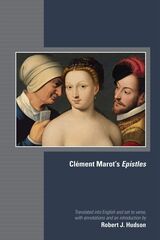
Clément Marot's Epistles
Clément Marot
Arizona Center for Medieval and Renaissance Studies, 2021
The first complete, versified English-language translation of the epistles of Renaissance poet Clément Marot.
Clément Marot (1496–1544), a royal poet in Renaissance France who ushered in new verse forms and renewed existing ones, stands as one of the most important literary voices of the first half of the sixteenth century. Clément Marot’s Epistles represents a first attempt to offer a sustained English-language translation and critical edition of what is widely considered his most personal, historically relevant, and crowning verse form. Aiming for integrality and poetic precision, the volume translates and sets to verse all seventy-four of Marot’s epistles, employing the same meter and rhyme scheme used by the poet in the original compositions. Likewise focused on capturing Marot’s poetic voice, thus maintaining idiomatic and literary integrity, the resulting translation is an attempt to relate the playfulness and pathos of Marot’s verse, rendering it accessible to an anglophone public.
Beyond the more traditional verse epistles included in the primary base text, Marot’s authorized complete works from 1538, the volume also offers translations of the introductory prose epistles penned by Marot for his Adolescence clémentine of 1532 and the 1538 edition (Lyon, Dolet), as well as the coq-à-l’âne and other versified satirical epistles, the “artificial epistle” retelling of a popular medieval romance, and more. A robust critical apparatus includes ample footnotes, an extensive introduction, illustrations, a bibliography, a chronological table, and a concordance with the principal modern French-language editions of Marot’s epistles.
The book should appeal to English-speaking historians and literary scholars alike, as well as to poetry lovers, who will appreciate a new acquaintance with this distinctive voice from poetry’s past.
Clément Marot (1496–1544), a royal poet in Renaissance France who ushered in new verse forms and renewed existing ones, stands as one of the most important literary voices of the first half of the sixteenth century. Clément Marot’s Epistles represents a first attempt to offer a sustained English-language translation and critical edition of what is widely considered his most personal, historically relevant, and crowning verse form. Aiming for integrality and poetic precision, the volume translates and sets to verse all seventy-four of Marot’s epistles, employing the same meter and rhyme scheme used by the poet in the original compositions. Likewise focused on capturing Marot’s poetic voice, thus maintaining idiomatic and literary integrity, the resulting translation is an attempt to relate the playfulness and pathos of Marot’s verse, rendering it accessible to an anglophone public.
Beyond the more traditional verse epistles included in the primary base text, Marot’s authorized complete works from 1538, the volume also offers translations of the introductory prose epistles penned by Marot for his Adolescence clémentine of 1532 and the 1538 edition (Lyon, Dolet), as well as the coq-à-l’âne and other versified satirical epistles, the “artificial epistle” retelling of a popular medieval romance, and more. A robust critical apparatus includes ample footnotes, an extensive introduction, illustrations, a bibliography, a chronological table, and a concordance with the principal modern French-language editions of Marot’s epistles.
The book should appeal to English-speaking historians and literary scholars alike, as well as to poetry lovers, who will appreciate a new acquaintance with this distinctive voice from poetry’s past.
[more]
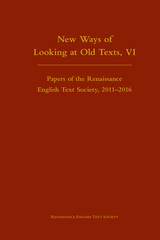
New Ways of Looking at Old Texts, VI
Papers of the Renaissance English Text Society 2011-2016
Arthur F. Marotti
Arizona Center for Medieval and Renaissance Studies, 2019
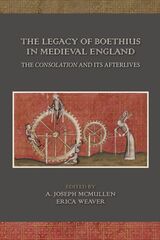
The Legacy of Boethius in Medieval England
The Consolation and its Afterlives
A. Joseph McMullen
Arizona Center for Medieval and Renaissance Studies, 2018
The study of Boethius’s medieval reception has enjoyed a resurgence of interest in recent years, with the publication of new editions, translations, databases, and research reshaping our understanding of his profound influence. This study offers the first holistic survey of the reworkings of the Consolation in medieval England, surveying the Old English Boethius together with Chaucer’s Boece and a host of understudied interlocutors for the first time in a volume of this kind. Arranged into sections on “earlier” and “later” periods, The Legacy of Boethius argues for a reassessment of the medieval English Boethian tradition as a 600-year continuum in vernacular reading and readership.
[more]
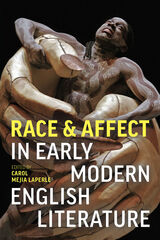
Race and Affect in Early Modern English Literature
Carol Mejia LaPerle
Arizona Center for Medieval and Renaissance Studies, 2021
This collection brings together critical race studies and affect theory to examine the emotional dimensions of race in early modern literature.
Race and Affect in Early Modern English Literature puts the fields of critical race studies and affect theory into dialogue. Doing so opens a new set of questions: What are the emotional experiences of racial formation and racist ideologies? How do feelings—through the physical senses, emotional passions, or sexual encounters—come to signify race? What is the affective register of anti-blackness that pervades canonical literature? How can these visceral forms of racism be resisted in discourse and in practice? By investigating how race feels, this book offers new ways of reading and interpreting literary traditions, religious differences, gendered experiences, class hierarchies, sexuality, and social identities. So far scholars have shaped the discussion of race in the early modern period by focusing on topics such as genealogy, language, economics, religion, skin color, and ethnicity. This book, however, offers something new: it considers racializing processes as visceral, affective experiences.
Race and Affect in Early Modern English Literature puts the fields of critical race studies and affect theory into dialogue. Doing so opens a new set of questions: What are the emotional experiences of racial formation and racist ideologies? How do feelings—through the physical senses, emotional passions, or sexual encounters—come to signify race? What is the affective register of anti-blackness that pervades canonical literature? How can these visceral forms of racism be resisted in discourse and in practice? By investigating how race feels, this book offers new ways of reading and interpreting literary traditions, religious differences, gendered experiences, class hierarchies, sexuality, and social identities. So far scholars have shaped the discussion of race in the early modern period by focusing on topics such as genealogy, language, economics, religion, skin color, and ethnicity. This book, however, offers something new: it considers racializing processes as visceral, affective experiences.
[more]
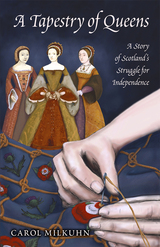
Carol Milkuhn
Arizona Center for Medieval and Renaissance Studies
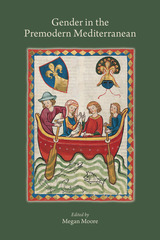
Gender in the Premodern Mediterranean
Megan Moore
Arizona Center for Medieval and Renaissance Studies, 2019
Drawing upon literary, historical, and visual evidence, this collection of interdisciplinary essays examines how the Mediterranean shaped practices of gender in the premodern era. This volume bridges the gap between gender studies and Mediterranean studies, which have a natural fit with each other in their interest on defining identity carefully through connectivity and attentiveness to cultural hegemonies. The essays in this volume build off of this double approach to offer a unique contribution to the field, and use gender to understand the Mediterranean and the Mediterranean to understand premodern gender.
Whereas other volumes have examined gender in the premodern period or premodern Mediterranean Studies, to date no other volume has sought to explore the intersection of the two. The interdisciplinary nature of the essays will make them useful to both scholars and teachers, for they will combine theory and practice in a length that makes them easily accessible to advanced students as well as specialized researchers. The first chapter provides a critical overview of the scholarship on Mediterranean studies as a field of area studies as well as an overview of gender studies in the medieval period. As such, the volume will be useful for students, teachers, and researchers, and its interdisciplinary nature reflects the diaspora of the Mediterranean itself.
Whereas other volumes have examined gender in the premodern period or premodern Mediterranean Studies, to date no other volume has sought to explore the intersection of the two. The interdisciplinary nature of the essays will make them useful to both scholars and teachers, for they will combine theory and practice in a length that makes them easily accessible to advanced students as well as specialized researchers. The first chapter provides a critical overview of the scholarship on Mediterranean studies as a field of area studies as well as an overview of gender studies in the medieval period. As such, the volume will be useful for students, teachers, and researchers, and its interdisciplinary nature reflects the diaspora of the Mediterranean itself.
[more]
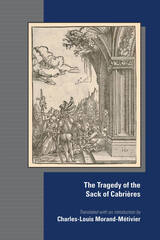
The Tragedy of the Sack of Cabrières
Charles-Louis Morand-Métivier
Arizona Center for Medieval and Renaissance Studies, 2022
A critical edition and the first English translation of the French play.
April 1542 saw a massacre of epic proportions in the Luberon, in southeastern France, of its Waldensian population, who had been peacefully living there after they settled in a few centuries before. This massacre foreshadowed the wars of religion, which tore apart the kingdom for almost forty years. The Tragédie du Sac de Cabrières is the only play devoted to these events. This is a critical edition and English translation of the French play. Three critical editions of the play have been published in 1927, 1928, and 1998, and this new edition complements the previous works. This is the first English translation of the play and makes it available to an international audience of scholars and students of the early modern period.
This edition “translates” the moment of the play's creation, the representation of the event, and its importance in the narrative of religious persecutions in sixteenth-century France. It explains how history is dramatized through the creation of the scenic story and scenic play of Cabrières. and how the specific retelling of the events of Cabrières makes this a tool of historical narration, thus allowing the audience to participate in the unfolding of history before their eyes. Therefore, they become part of history, because it is played before their eyes so that they can not only witness it but also propagate the glory of the martyrs for future generations. This is not only a translation and a work of literary scholarship, it is an analysis of the literary, political, and religious production of this period, and a multidisciplinary analysis of Waldensianism in southeastern France.
April 1542 saw a massacre of epic proportions in the Luberon, in southeastern France, of its Waldensian population, who had been peacefully living there after they settled in a few centuries before. This massacre foreshadowed the wars of religion, which tore apart the kingdom for almost forty years. The Tragédie du Sac de Cabrières is the only play devoted to these events. This is a critical edition and English translation of the French play. Three critical editions of the play have been published in 1927, 1928, and 1998, and this new edition complements the previous works. This is the first English translation of the play and makes it available to an international audience of scholars and students of the early modern period.
This edition “translates” the moment of the play's creation, the representation of the event, and its importance in the narrative of religious persecutions in sixteenth-century France. It explains how history is dramatized through the creation of the scenic story and scenic play of Cabrières. and how the specific retelling of the events of Cabrières makes this a tool of historical narration, thus allowing the audience to participate in the unfolding of history before their eyes. Therefore, they become part of history, because it is played before their eyes so that they can not only witness it but also propagate the glory of the martyrs for future generations. This is not only a translation and a work of literary scholarship, it is an analysis of the literary, political, and religious production of this period, and a multidisciplinary analysis of Waldensianism in southeastern France.
[more]
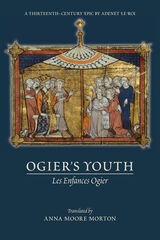
Ogier's Youth (Les Enfances Ogier)
A Thirteenth-Century Epic by Adenet le Roi
Anna Moore Morton
Arizona Center for Medieval and Renaissance Studies, 2020
Ogier’s Youth is the first English prose translation of Les Enfances Ogier, an epic poem written in Old French in the late thirteenth century by Adenet le Roi, who lived in Brabant and Flanders. It concerns the exploits of a young knight, Ogier, who rose from his status as Charlemagne’s captive to become the hero of Charlemagne’s army in the latter’s campaign to recover Rome from a pagan army and restore the Pope to his holy seat. Ogier came to symbolize the hero who saves the city, the land from monstrous enemies. His legend as conquering hero persisted for centuries; versions of his story were written in many forms and many European languages. Reminders of Ogier’s fame are found from Belgium to Italy even today in such events as processions and puppet shows. Adenet’s version of the Ogier story is considered the most important and influential in the development of the enduring Ogier legend. Throughout Adenet’s story, we witness the development of a strong friendship between Ogier and Carahuel, a noble Saracen (Muslim) knight of the opposing army. The two warriors save one another’s lives when treachery threatens. We get a full and constant picture of Carahuel as a human being of complete integrity, honor and loyalty—qualities which also characterize Ogier. In addition, Carahuel’s faithful fiancée Gloriande, a strong, influential woman whose efforts are also crucial to the safety of both Ogier and Carahuel, plays an important part.
[more]
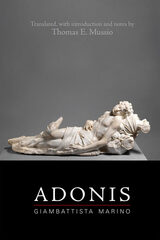
Giambattista Marino
Adonis
Thomas E. Mussio
Arizona Center for Medieval and Renaissance Studies, 2019
This is the first complete translation in English of Giambattista Marino’s Adone, a poem of 20 cantos written in Italian and first published in 1623 in Paris. Although Marino’s work has been characterized as a mythological poem with the tragic tale of Venus and Adonis at its core and woven through with retellings of many Greek and Roman myths, it is clear that Marino strove to write more than an Italian version of Ovid’s Metamorphoses. The highly wrought descriptive passages that permeate the poem, the allusions to contemporary political figures and events, and the rich scientific, philosophical, and theological language of many passages reflect Marino’s particular poetic style, his broad interests, and his engagement with the political and intellectual scene of early seventeenth-century Europe. One of the goals of this translation is to provide a highly accessible version of the whole poem and to expand its readership to include not only students and scholars of the romance epic and the early modern period but also curious general readers. It is hoped that this modern, annotated translation will spur new research on Marino’s poem and bear new assessments of the poem’s relation to its sources, of its influence on later literature, and of its vital connection with key issues of Marino’s time, such as scientific advancement, discovery and exploration, and the power and influence of the Catholic Church.
Translated, with introduction and notes by Thomas E. Mussio.
Translated, with introduction and notes by Thomas E. Mussio.
[more]
READERS
Browse our collection.
PUBLISHERS
See BiblioVault's publisher services.
STUDENT SERVICES
Files for college accessibility offices.
UChicago Accessibility Resources
home | accessibility | search | about | contact us
BiblioVault ® 2001 - 2024
The University of Chicago Press









